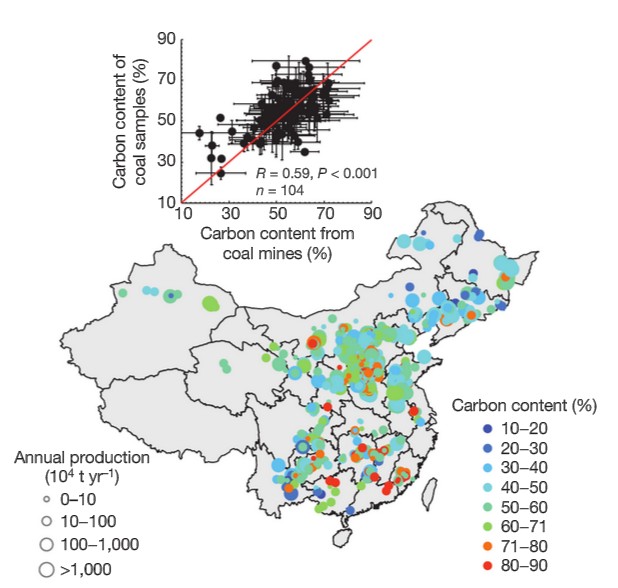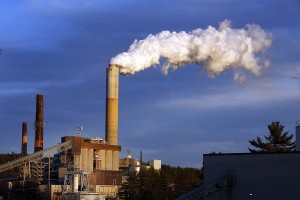According to a study conducted by Nature, China’s emissions in 2013 were as much as 14% lower than previously thought. The study says that China released 10.6 billion tonnes less carbon dioxide (CO2) during 2000 to 2013, equivalent to three years of EU emissions.
China still is the highest in terms of carbon emissions but the latest figures prove that they are not as high as previously stated such as according to a report by Harvard’s Kennedy School’s Belfer Center, published in May 2015, in 2012 China was the largest contributor to carbon emissions from fossil fuel burning and from cement production. With 8.50 Gt CO2 in carbon emissions from fossil burning and cement production in 2012, China was responsible for 25 percent of global carbon emissions. China’s cumulative emissions from fossil fuel burning and cement production from 1950-2012 were 130 Gt CO2, the report stated.

Source: Nature
These revised estimates in this latest study of China’s carbon emissions were produced by an international team of researchers, led by Harvard University, UEA, the Chinese Academy of Sciences and Tsinghua University, in collaboration with 15 other international research institutions. Researchers reexamined the emissions from the burning of fossil fuels and cement production from 1950-2013.

Source: Nature
In a press release, lead UK researcher Prof Dabo Guan, of UEA’s School of International Development, said the key contributor to the new estimates was fuel quality. This factor was not kept in mind in previous estimates. According to the U.S. Energy Administration, China is the world’s top coal producer, consumer, and importer and accounts for almost half of global coal consumption, an important factor in world energy-related carbon dioxide emissions. Prof Guan explains that although China is the largest coal consumer in the world, the quality of the this coal is lower hence it has a lower heat value and carbon content compared to the coal burned in countries such as U.S. and Europe.
Meanwhile, China has been working towards lowering its carbon emission. According to a report published by Xinhua, China has promised to reach the peaking of carbon dioxide emissions around 2030 and make best efforts to peak early in its intended nationally determined contributions (INDC). The INDC is an action plan submitted by China to the UN Framework Convention on Climate Change. In the plan, China has said that it aims to cut carbon dioxide emissions per unit of gross domestic product by 60 percent to 65 percent from the 2005 level by 2030.
Various small-business owners and corporations have launched initiatives to lower carbon emissions. Researchers from MIT Joint Program on the Science and Policy of Global Change and the Institute for Energy, Environment and Economy at Tsinghua University in Beijing, China have launched the CECP to “analyze the impact of existing and proposed energy and climate policies in China on technology, energy use, the environment and economic welfare by applying and developing both quantitative and qualitative analysis tools”.
Information from Nature, Harvard Kennedy School, Xinhua, CECP, CCTV News and U.S. Energy Administration.
 CGTN America
CGTN America AP Photo/Jim Cole, File
AP Photo/Jim Cole, File
